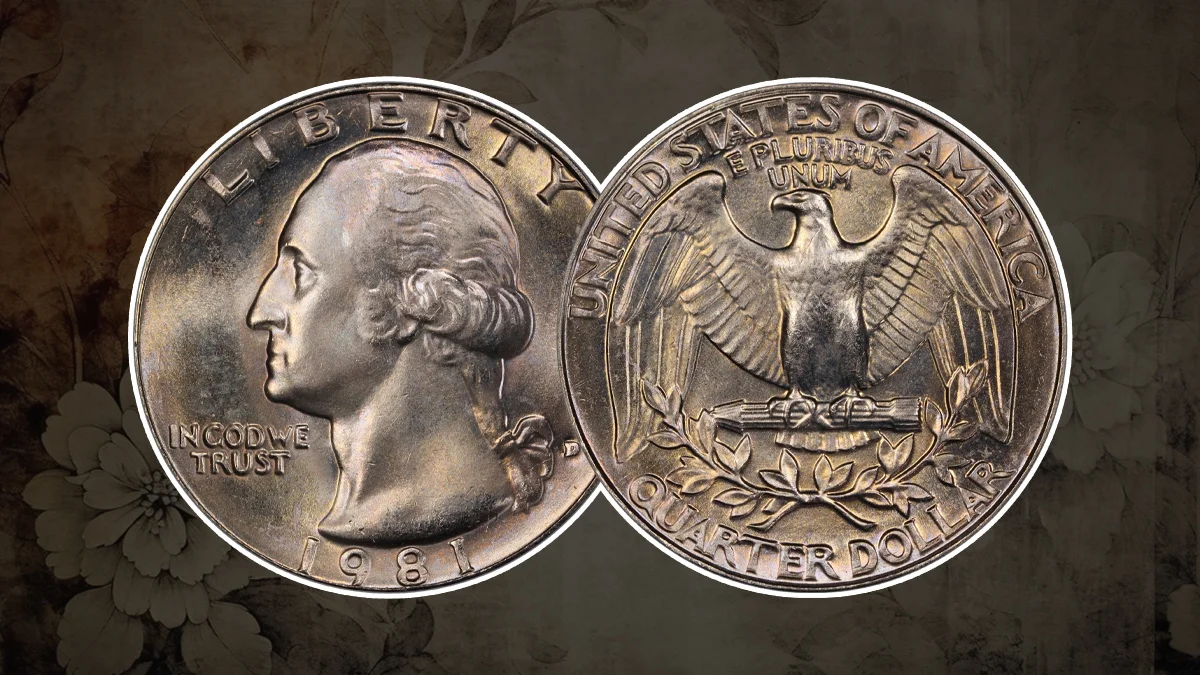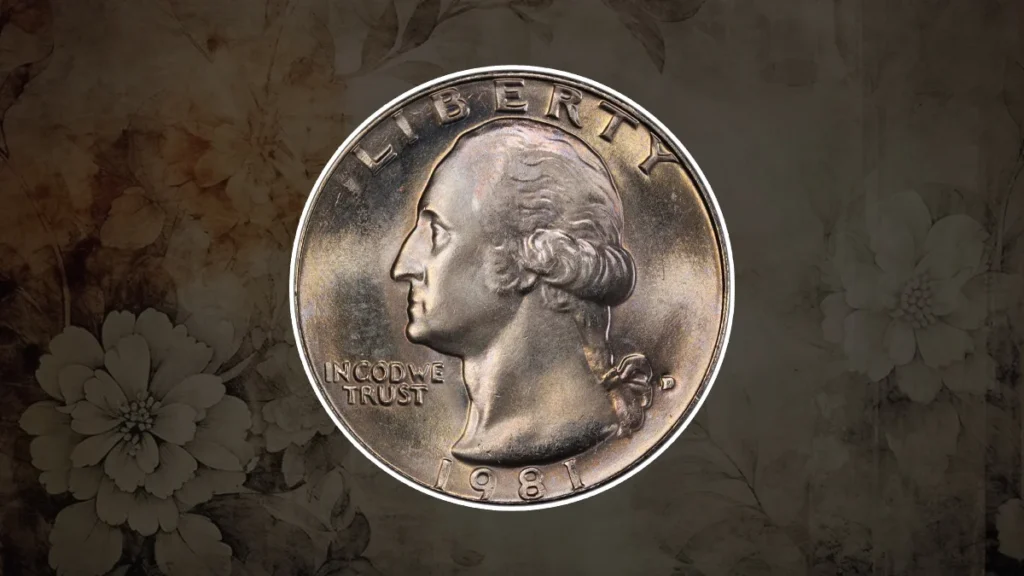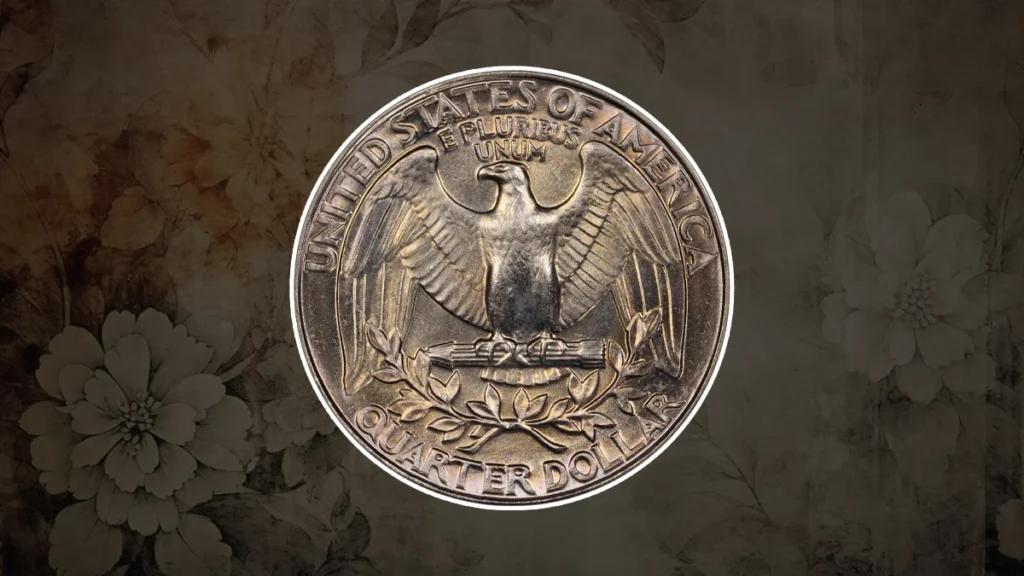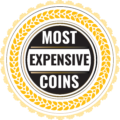
If you have a Washington quarter from 1981, you might be wondering if it’s currently value a lot of money. A large number of 1981 quarters continue to be in use, however depending on their condition, mint mark, and potential flaws, some may be valued more than their face value. This article will give you a thorough overview of the 1981 Washington Quarter, with its history, features, design, rarity, errors, grading, and worth, whether you’re a collector or just interested in American currency.
The Washington quarter has been an integral component of American currency for nearly a century. The Washington quarter, which first appeared in 1932 to honor George Washington on his 200th birthday, continues to be one of the most commonly utilized coins in the United States. The 1981 Washington quarter may not look special, but it might be a valuable addition to any collection depending on its condition, mint mark, and errors. We’ll go over all you need to know about the 1981 Washington quarter in this comprehensive overview, such as its design, history, and current market value.
History of the 1981 Washington Modern Quarter
In 1932, the Washington quarter was first introduced as a temporary special currency to honor George Washington’s birthday. Congress ultimately decided to replace the Standing Liberty quarter with a permanent Washington quarter, though they originally proposed producing a Washington half-dollar. The coin’s obverse shows a depiction of George Washington based on a statue by French sculptor Jean-Antoine Houdon. John Flanagan’s design was selected in lieu of Laura Gardin Fraser’s previous one.
A national lack of silver caused the Washington Quarter to go from being 90% silver to a copper-nickel coated by 1965. This copper-nickel era is represented by the 1981 quarter, which was struck in three locations: Philadelphia, Denver, and San Francisco. Even though the coin is ubiquitous, high-grade examples and specific flaws may command a premium.
Specifications of the 1981 Washington Modern Quarter
- Composition: 75% copper and 25% nickel over a pure copper core.
- Weight: 5.67 grams.
- Diameter: 24.3 mm.
- Thickness: 1.75 mm.
- Edge: Reeded.
- Mints: Philadelphia (P), Denver (D), San Francisco (S – Proof).
Design of the 1981 Washington Modern Quarter
Obverse Design

The obverse side of the coin 1981 Washington Modern Quarter has a left-facing bust of George Washington. This image was designed by John Flanagan. It is based on a sculpture by Jean-Antoine Houdon. The word LIBERTY is written over Washington’s head, and the year 1981 is at the bottom side. The words IN GOD WE TRUST are written on the left side of Washington’s picture, whereas the mint mark is located immediately below his ponytail.
Reverse Design

The reverse side of the 1981 quarter shows an American bald eagle with wings outstretched, perched on a bundle of arrows. This powerful imagery represents the nation’s strength and readiness for defense. Two olive branches, which represent peace, surrounded the eagle. QUARTER DOLLAR is the coin’s denomination, and the text UNITED STATES OF AMERICA is written under the olive branches and above the eagle. Above the eagle, the slogan E PLURIBUS UNUM is also seen clearly.
Rarity and Condition
The 1981 quarter is generally not considered rare because of its huge mintage. Over 600 million quarters have been issued by the Denver Mint and over 600 million by the Philadelphia Mint. Around 4 million proof coins were made by San Francisco specifically for coin collectors.
Uncirculated quarters and proof coins can be worth more than circulating 1981 quarters, which are quite common only for their face value. The coin’s value is greatly impacted by its condition. The most valuable coins are high-grade mint state coins (MS67 and above), which may bring attractive auction prices well over $100.
Errors in the 1981 Washington Modern Quarter
Quarters from 1981 with errors may bring in a lot more value, which is why collectors are so attracted to them. Look for the following important errors:
- Doubled-Die Obverse: The doubled-die obverse is one of the 1981 quarter’s most prominent errors. This error occurs when the coin is struck by the die several times at slightly various angles. The coin looks to be doubled on some design parts, especially the year and the words IN GOD WE TRUST. Coins with this defect may be sold for up to $100, according to how much they have doubled.
- Over Dime Planchet: Some 1981 quarters were accidentally struck on dime planchets. Due to the size difference between a quarter and a dime, this error creates a smaller-than-usual quarter with parts of the design omitted. The value of coins having such an error can reach $200, depending on the size of the design’s loss.
- Rarely, quarters have been struck twice—the second strike occurring after the coin has flipped over. This is known as a flip-over double strike. This complex flaw has a chance to produce beautiful designs on the coin and has been sold for as much as $7,000 at auction.
- Off-Center Strike: A poorly aligned or incomplete planchet can result in an off-center strike, which makes the design misplaced or incomplete. These errors can have a value of around $100, depending on how much off-center the strike was.
Grading the 1981 Quarter
Grading is an essential part of determining a coin’s value. The scale used to grade coins ranges from Basal State 1 (worst) to Mint State 70 (excellent condition). The coin is valued more depending on the grade, especially when it is near-perfect or uncirculated. Collectors evaluate 1981 quarters by choosing important parts like Washington’s head and the eagle’s feathers, where they look for minimum wear, shine, and specific detail.
Value of the 1981 Washington Modern Quarter
The value of a 1981 quarter depends on the coin’s condition, mint mark, and any possible errors. Here’s a general analysis of the value:
- 1981-P Quarter: The value of circulated examples varies between $0.30 to $0.75. Coins in MS67 condition may bring up to $70 in uncirculated grades.
- 1981-D Quarter: Uncirculated quarters in MS67 condition may fetch up to $105, but moving examples are valued the same as Philadelphia coins.
- 1981-S Proof Quarter: San Francisco-proof coins are mostly valued by collectors. Quarters that are Type I proof and in pristine MS70 condition are valued at around $22, while Type II proofs can fetch up to $140. The highest-known value paid for a proof quarter from 1981-S was $2,350.
Related Posts
- 1971 Washington Quarter: A Complete Guide
- 1970 Washington Modern Quarter: A Complete Guide
- 1969 Washington Modern Quarter: A Comprehensive Guide
- 1968 Washington Modern Quarter: A Complete Guide
Bottom Line
Even though the majority of 1981 Washington quarters in circulation are just worth their face value, some errors and high-grade coins can add significant value to any collection. Knowing more about the 1981 quarter’s design, history, and errors can help you evaluate its value and if it’s worth preserving or adding to your collection. If you want to maximize the value of your 1981 quarter, pay attention to condition and rarity, as these features are as important in determining value as they are comparable to other coins.
